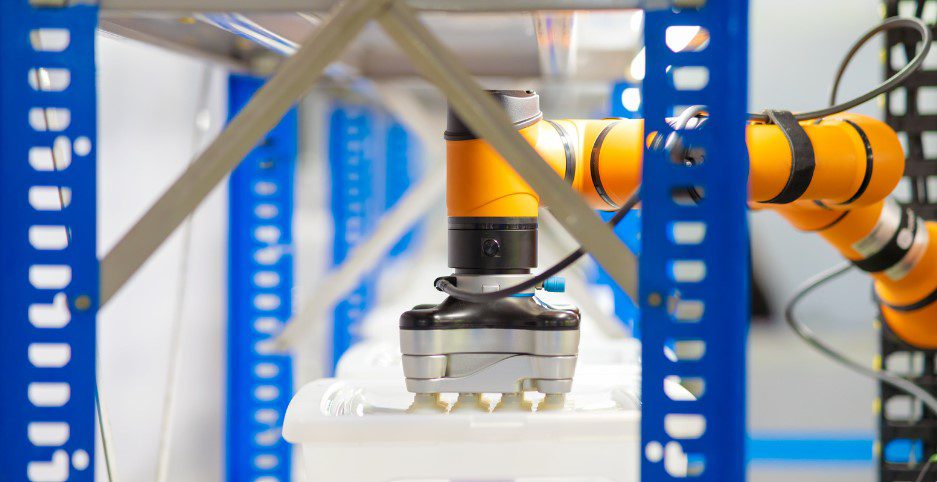Unlocking Efficiency: The Advantages of Cobot Arms in Industrial Settings

In the rapidly evolving landscape of industrial automation, companies are continuously seeking ways to enhance efficiency and productivity. One innovation that stands out in this quest is the collaborative robot, commonly known as the cobot arm. These advanced machines are not only transforming production processes but also redefining the interaction between humans and robots on the factory floor. This article explores the myriad advantages of cobot arms and how they are revolutionizing industrial settings.
Understanding Cobot Arms
Cobot arms represent a significant leap from traditional industrial robots. Unlike their predecessors, cobots are designed to work alongside human operators without the need for safety cages or other barriers. This collaborative nature is rooted in their history, which traces back to the late 20th century when the need for more flexible and user-friendly automation solutions became apparent.
The evolution of cobots has seen them develop from basic mechanical arms to highly sophisticated machines capable of performing a wide range of tasks. Modern cobot designs are characterized by their ease of use, flexibility, and safety features. These robots come in various models, each tailored for specific applications, from precise assembly tasks to heavy-duty material handling.
For those interested in a deeper understanding of cobot arms, including their programming and operational specifics, a manual script can be an invaluable resource. This document typically provides detailed instructions on setting up and using cobots, offering insights into their functionality and integration within industrial systems.
Key Advantages of Cobot Arms
One of the most compelling advantages of cobot arms is their ability to significantly boost productivity. Cobots excel in tasks that require precision and consistency, such as assembly, welding, and quality control. By integrating cobots into production lines, companies have reported remarkable increases in production speed and accuracy. For instance, a manufacturer of electronic components experienced a 30% increase in throughput after deploying cobot arms for their assembly processes. This boost in productivity not only improves output but also enhances overall operational efficiency.
Cobot arms are celebrated for their remarkable flexibility and adaptability. Unlike traditional robots, which are often fixed in one position and programmed for a specific task, cobots can be easily reconfigured to handle different tasks as production needs change. Their user-friendly programming interfaces allow operators to quickly reprogram them, making it simple to adapt to new products or production processes. This adaptability is particularly valuable in industries where production lines are subject to frequent changes, such as automotive and consumer goods manufacturing.
Safety is a primary concern in any industrial setting, and cobots address this issue by being designed for safe interaction with human workers. Equipped with advanced sensors and safety features, cobots can detect and react to the presence of human operators, ensuring that they operate safely without posing a risk of injury. This collaborative approach not only enhances workplace safety but also fosters a more efficient and harmonious working environment.
Industry Applications
In the manufacturing sector, cobot arms are increasingly being utilized to enhance various production processes. From assembly lines to packaging and quality control, cobots are proving their versatility and efficiency. For instance, in a car manufacturing plant, cobots are employed to perform repetitive tasks such as screwdriving and component assembly, freeing up human workers to focus on more complex tasks. This integration of cobots not only streamlines production but also ensures consistent quality and precision.
The automotive industry has been a pioneer in adopting cobot technology. Cobots are used for tasks such as welding, painting, and assembly, where their precision and flexibility make them invaluable. In automotive assembly lines, cobots work alongside human operators to handle tasks that require high accuracy and repeatability. This collaboration improves overall production efficiency and helps meet the high standards of quality demanded in the automotive sector.
Challenges and Considerations
Despite their numerous advantages, cobot arms are not without their limitations. Current cobot technology has certain constraints, such as payload capacity and speed, which may impact their suitability for some applications. Additionally, while cobots are designed to work safely with humans, there are still areas for improvement in their ability to handle complex or unpredictable environments. Ongoing advancements in cobot technology aim to address these limitations and expand their capabilities.
Integrating cobots into existing production systems can present challenges, particularly in facilities with legacy equipment. Ensuring compatibility and seamless integration requires careful planning and consideration. Companies must evaluate how cobots will interact with their current systems and make any necessary adjustments to facilitate smooth operation. Addressing these integration challenges is crucial for maximizing the benefits of cobots and achieving successful implementation.
Conclusion
Cobot arms are transforming industrial settings by offering a range of advantages that enhance efficiency and productivity. Their ability to boost productivity, provide flexibility, ensure safety, and deliver cost savings makes them a valuable asset in modern manufacturing and beyond. While there are challenges to address, the ongoing advancements in cobot technology promise to overcome these obstacles and unlock new possibilities for industrial automation.
